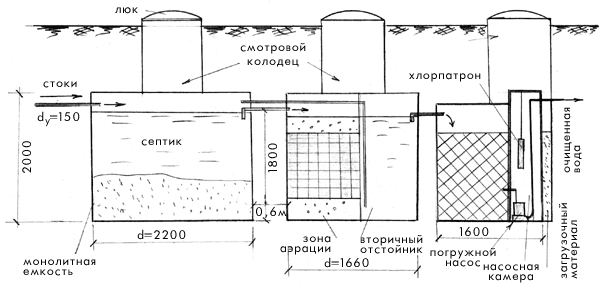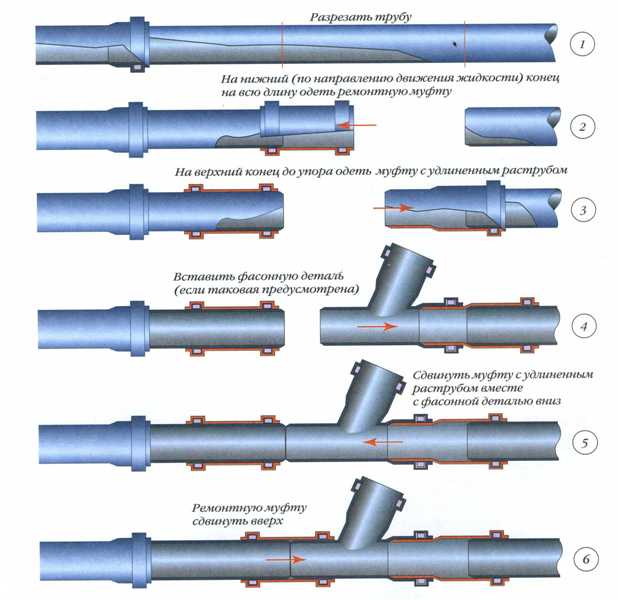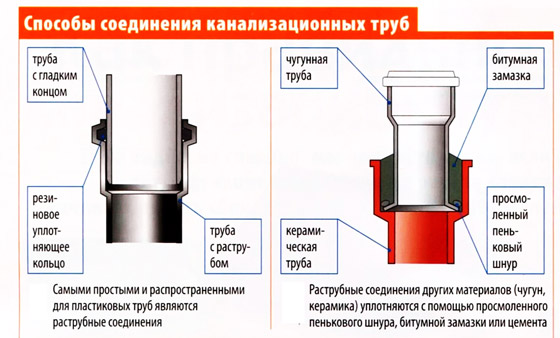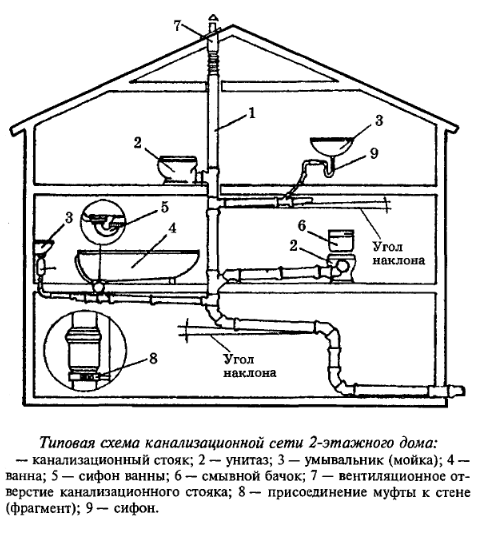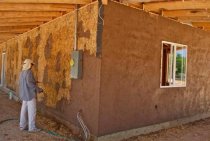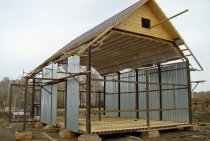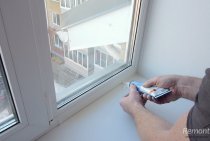Autonomous system
Wastewater disposal systems are classified into simplified and autonomous. The simplified system is intended for rare use, its scheme includes the following elements:
- single chamber septic tank;
- special filter well;
- exhaust riser;
- sewer outlet pipes, during the laying of which a slope of 2 cm is observed for each m of laying.
For an autonomous sewerage system, purchase:
- septic tank (preferably PVC);
- make a distribution well;
- sewer and drainage pipes;
- supply ventilation ducts specifically for the septic tank and the installed riser.
Arrangement in the cottage
Having drawn up a detailed wiring plan and having prepared all the required materials and tools, you can proceed with the installation of the system. The procedure for constructing the internal contour of the system is as follows. First you need to provide each plumbing fixture with a siphon with a water seal. This will prevent the penetration of malodorous gases into the premises. Then the first outlet pipe is connected to the S-shaped tube of the siphon. To make a stronger connection, you need to use a special sealant. The first outlet pipe is connected to the horizontal pipe with a 45° elbow.
The project of the external sewerage system.
When arranging the sewer in the kitchen and locating the riser in the bathroom, the pipe leading to the riser is mounted with a slope. Outlet pipes from sinks or sinks, as a rule, have a cross section of 5 cm. The optimal slope for such pipes is 3 cm per 1 m of pipe. For example, if from the sink to the entrance to the riser is 3 m, the slope from the beginning of the pipe to its connection with the riser should be 9 cm.
Pipes are immediately fixed with clamps built into the wall or floor. Clamps should be located at a distance of no more than 2 m from each other. When arranging sewerage in a frame house, pipes are usually hidden in walls or ceilings. Pipes must be laid before the house is insulated. They are attached to the frame racks with clamps.
Installation of an external network begins with land work. Trenches are prepared in advance for laying pipes and a pit for installing a septic tank. The trenches must be dug so that the pipeline has a certain slope. At the bottom of the pit and trenches, a shock-absorbing cushion of sand and fine gravel is laid. The pillow needs to be well tamped. After completion of land work, pipes are laid in the trenches, and a septic tank is placed in the pit. When using plastic pipes, the connection is made "in the socket". Silicone sewer grease is applied to the smooth end of the pipe and inserted into the rubber seal installed in the socket.
The septic tank is installed according to the manufacturer's instructions. If you are using a Tank septic tank, simply install its body in the pit. There is no need to strengthen the walls of the pit with concrete and fix the septic tank. If trenches are dug to a depth above the level of soil freezing in this area, it is necessary to perform thermal insulation of pipes. It is best to use a polyurethane foam heat insulator for this, put on pipes like a shell. Pipes should only be backfilled after a successful hydraulic test. Such a test allows you to identify possible leaks and installation defects.
So, the local sewerage of a country house is an autonomous system that collects, transports and processes effluents generated during the consumption of water in the house. If desired, you can mount the entire system with your own hands. This is a simple job that requires knowledge of basic sanitary and building codes.
Material selection
 Plastic pipes for internal and external sewage
Plastic pipes for internal and external sewage
For proper laying of sewers in a private house with your own hands, it is important to choose a reliable collector material. Usually use plastic and cast iron pipes
Metal is good for laying the outer part of the system. It is durable, wear-resistant, inert to aggressive environments and temperature extremes. However, without the help of a neighbor or special equipment, the laying of cast-iron pipes cannot be carried out. They are significantly more expensive than polymer ones.
Plastic pipes made of PVC or HDPE have proven themselves well in the device of private sewerage. The second option is especially suitable for laying the outer part of the collector. Polymer pipes have a number of positive properties:
- Favorable cost of materials and lightness. You can work with the polymer yourself.
- The inertness of plastic to temperature extremes and aggressive environments.
- Ideal smoothness of the inner walls of the pipes. Drains on them move without delays and noise.
- Tendency to linear stretching and tear resistance.
Choice of materials and tools
Scheme of connection of polypropylene sewer pipes.
The materials chosen for arranging sewerage in a cottage should have the following qualities: durability, resistance to high temperatures and various chemicals, ease of installation. All these requirements are met by cast iron and plastic pipes. However, cast iron products are heavy, so it is quite difficult to load and transport them. Putting them together doesn't get any easier. So most often polypropylene pipes are used for sewerage in a cottage.
It is necessary to distinguish between pipes for external and internal networks. Pipes used for outdoor networks have greater strength, because they are operated in harsh conditions. In addition to pipes, additional parts and materials are required for pipeline assembly:
- fitting;
- sealant;
- stop valves;
- siphons.
Ways to connect sewer pipes.
The range and number of fittings depends on the specific wiring diagram. If you decide to install the sewerage system of a country house with your own hands, you will need the following tools:
- impact drill or hammer drill;
- iron for soldering pipes;
- grinder or hacksaw;
- chisel;
- hammer;
- screwdrivers;
- wrenches and other small tools.
Internal and external sewerage
Scheme of internal sewerage.
Sewerage of a cottage is a rather complicated system. It consists of an inner and an outer part. Internal sewerage for the cottage includes:
- drain receivers - plumbing equipment, consisting of sinks, washbasins, bathtubs, toilet bowls, bidets, showers and other things;
- sewage lines;
- risers;
- outlets for the external sewer system.
Sewerage for a cottage, arranged on the outside of the house, has a slightly different purpose. It is intended for collection of wastewater, their filtration, purification, disposal. Most often, such a system consists of septic tanks, but it is possible to connect to a common sewer system if it is laid on the site. For external sewerage in the cottage, the following elements are used:
- pipeline systems from the house to the treatment plant;
- local cleaning systems;
- wells;
- wastewater discharge points after their treatment.
Often, a drainage system is also connected to the external sewage system in the cottage, which provides groundwater drainage. A drain system from baths, pools and other things can be connected to it.
